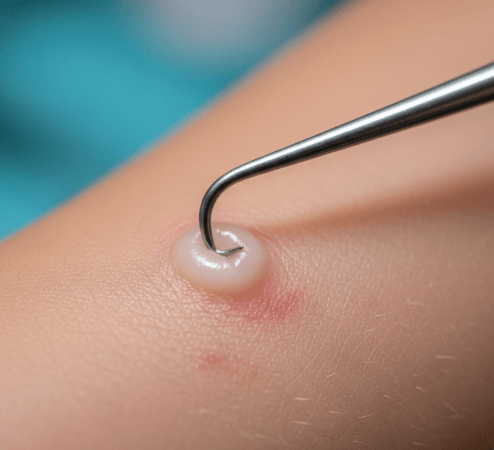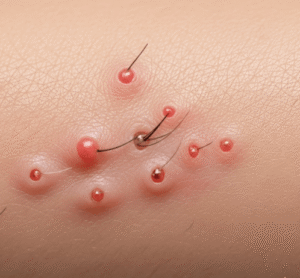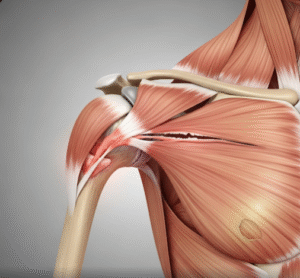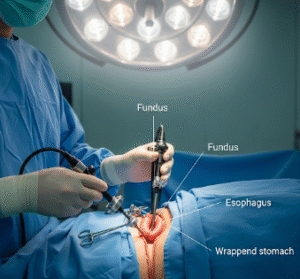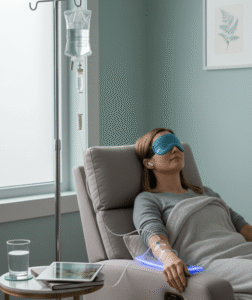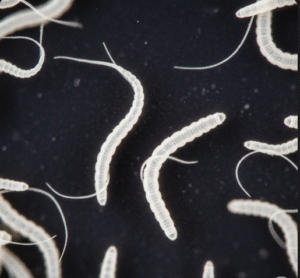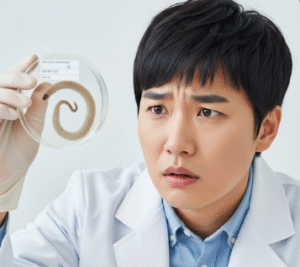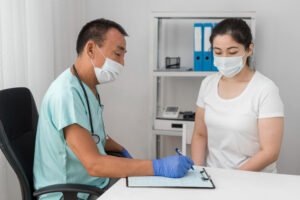What It Is
Defining Molluscum Contagiosum
→ Molluscum contagiosum is a viral skin infection caused by the poxvirus, producing small, firm, dome-shaped bumps with a central dimple.
→ It spreads through direct skin contact, contaminated objects, or scratching, and is especially common in children, athletes, and people with weakened immunity.
→ While the condition is self-limiting and may disappear naturally in 6–18 months, many patients seek treatment for cosmetic, social, or comfort reasons.
Defining Curettage for Molluscum
→ Curettage is a procedure where a dermatologist removes molluscum bumps by gently scraping them with a small, spoon-shaped surgical tool called a curette.
→ It is considered one of the most effective and immediate methods for clearing lesions.
→ In Korea, dermatologists often recommend curettage for persistent, widespread, or cosmetically concerning cases.
Key Characteristics of Curettage
- Provides instant lesion removal
- Minimally invasive, performed in outpatient clinics
- Low recurrence compared to some other treatments
- Often combined with cryotherapy, topical creams, or laser therapy for resistant cases
Why It’s Done
Main Reasons for Curettage
➡ Cosmetic Concerns – Parents often request removal for children to avoid teasing at school.
➡ Prevention of Spread – Reduces risk of viral transmission to family members or classmates.
➡ Symptom Relief – Removes itchy, inflamed, or irritated bumps.
➡ Faster Resolution – While molluscum resolves naturally, curettage speeds up clearance.
➡ Minimizing Complications – Untreated lesions may become secondarily infected or cause eczema.
Alternatives
Non-Medical Options
- Observation (Watch-and-Wait) → Allowing the infection to clear naturally over 6–18 months.
- Covering Lesions → Using clothing or bandages to prevent spread.
- Hygiene Measures → Avoiding shared towels, swimming pools, or scratching lesions.
Medical Alternatives
→ Instead of curettage, other treatments include:
- Cryotherapy → Freezing lesions with liquid nitrogen.
- Cantharidin Application → A blistering agent applied by doctors (common in some countries, less in Korea).
- Topical Therapies → Retinoids, salicylic acid, or immune-modulating creams.
- Laser Therapy → For resistant or cosmetically sensitive lesions.
- Electrocautery → Burning lesions with heat; effective but less preferred for children due to discomfort.
Preparation
Before Curettage
➡ Dermatology Consultation – Doctor confirms diagnosis to rule out warts, milia, or acne.
➡ Parental Consent – In pediatric cases, parents are counseled on benefits and possible discomfort.
➡ Anesthesia Planning – Topical numbing cream or local anesthesia may be used, especially for children.
➡ Skin Cleaning – The area is disinfected before the procedure.
➡ Counseling – Patients are informed that multiple sessions may be needed for widespread molluscum.
How It’s Done
The Curettage Procedure
Step 1: Numbing the Area
→ A topical anesthetic cream is applied 20–30 minutes before curettage to reduce pain.
Step 2: Disinfection
→ The skin is cleaned with antiseptic solution.
Step 3: Scraping with Curette
→ The dermatologist uses a small, sterile curette to gently scoop out the molluscum core.
- This removes both the lesion and viral particles.
- Multiple lesions can be treated in one session.
Step 4: Hemostasis
→ Minor bleeding may occur; it is controlled with gentle pressure or chemical cautery.
Step 5: Wound Care
→ Antibiotic ointment and protective dressings may be applied to prevent infection.
Treatment Course
- Usually completed in one session for small numbers of lesions.
- Widespread cases may require several sessions spaced weeks apart.
- Follow-up visits ensure new lesions are treated early.
Recovery
Immediate Recovery
- Small red marks or superficial wounds appear where lesions were removed.
- Mild soreness or scabbing may last a few days.
- Children may return to school and normal activities immediately.
Long-Term Recovery
→ Lesions usually heal within 1–2 weeks, leaving little or no scarring.
→ If eczema or irritation was present, this also improves once lesions are removed.
→ Good hygiene helps prevent reinfection or spread.
Complications
Possible Risks
- Pain and Discomfort → Temporary during and after procedure, especially in children.
- Minor Bleeding → Controlled during the procedure, heals quickly.
- Infection → Rare if proper wound care is followed.
- Scarring → Minimal risk when done by experienced dermatologists.
- Recurrence → New lesions may appear if viral particles spread before treatment.
Treatment Options in Korea
Advanced Pediatric and Dermatology Care
Korea is known for child-friendly dermatology practices and precise cosmetic treatments, making it a preferred destination for molluscum management.
Why Korea Excels in Curettage for Molluscum
➡ Gentle Pediatric Approaches – Doctors use numbing creams, distraction methods, and careful techniques for kids.
➡ Combination Treatments – Curettage is often paired with cryotherapy or topical agents for stubborn cases.
➡ Cosmetic Precision – Korean dermatologists prioritize scar-free outcomes.
➡ Preventive Focus – Families are educated on hygiene and skin care to prevent recurrence.
Popular Uses in Korea
- Children with Widespread Molluscum → Curettage chosen for quick clearance.
- Adults with Cosmetic Concerns → Removal from face, neck, or visible areas.
- Athletes and Swimmers → To reduce spread in group environments.
- Immunocompromised Patients → Requires careful monitoring and repeated sessions.
Patient Experience in Korea
- Curettage procedures are outpatient-based and quick, often under 20 minutes.
- Clinics emphasize minimal pain, minimal scarring, and fast results.
- Parents receive aftercare kits with ointments and bandages.
- Follow-up visits ensure new lesions are managed promptly.
Conclusion
Molluscum contagiosum curettage in Korea is a safe, effective, and fast treatment that removes lesions immediately and prevents further spread.
By using gentle curette techniques with optional anesthesia, Korean dermatologists ensure children and adults experience minimal discomfort and achieve smooth, healthy skin.
With a focus on cosmetic outcomes, prevention, and family education, Korea offers some of the most advanced and reliable care for molluscum contagiosum worldwide.

